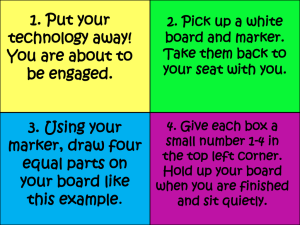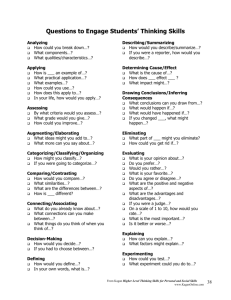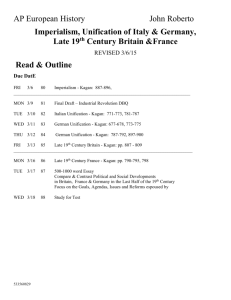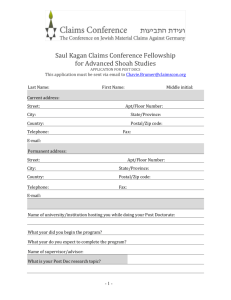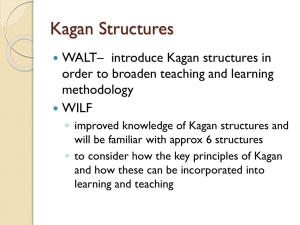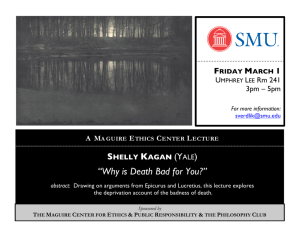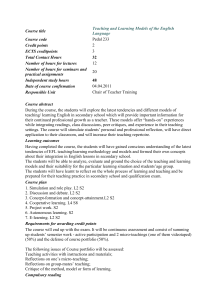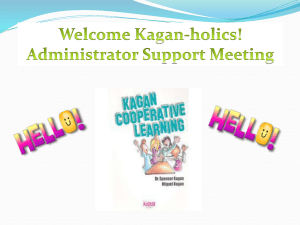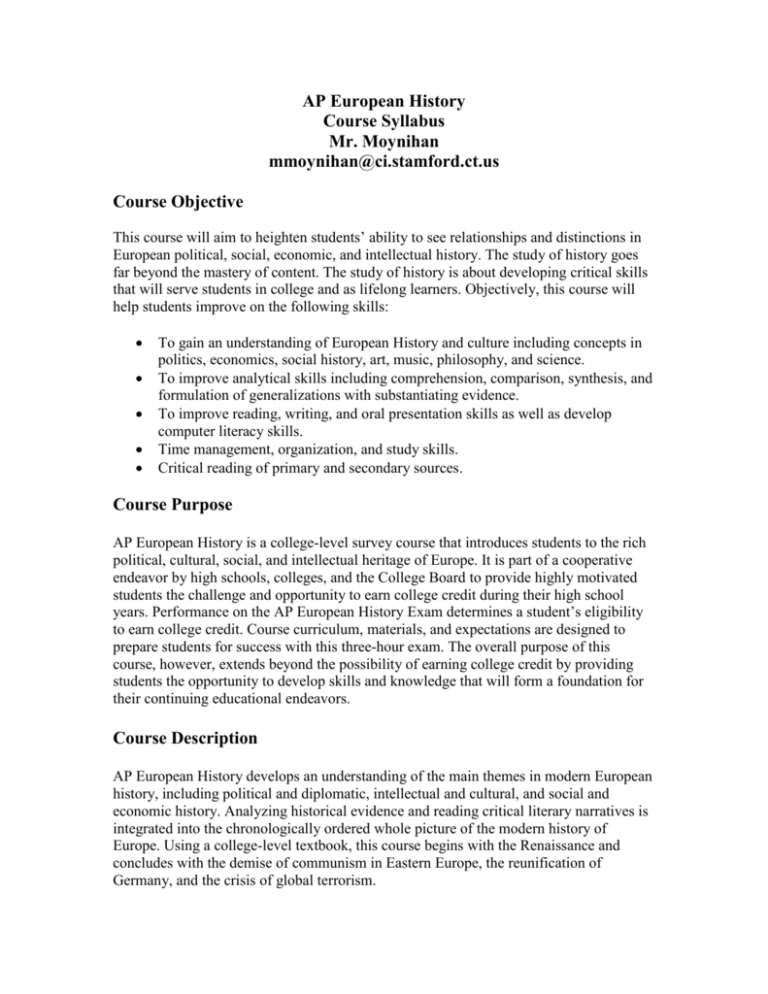
AP European History
Course Syllabus
Mr. Moynihan
mmoynihan@ci.stamford.ct.us
Course Objective
This course will aim to heighten students’ ability to see relationships and distinctions in
European political, social, economic, and intellectual history. The study of history goes
far beyond the mastery of content. The study of history is about developing critical skills
that will serve students in college and as lifelong learners. Objectively, this course will
help students improve on the following skills:
To gain an understanding of European History and culture including concepts in
politics, economics, social history, art, music, philosophy, and science.
To improve analytical skills including comprehension, comparison, synthesis, and
formulation of generalizations with substantiating evidence.
To improve reading, writing, and oral presentation skills as well as develop
computer literacy skills.
Time management, organization, and study skills.
Critical reading of primary and secondary sources.
Course Purpose
AP European History is a college-level survey course that introduces students to the rich
political, cultural, social, and intellectual heritage of Europe. It is part of a cooperative
endeavor by high schools, colleges, and the College Board to provide highly motivated
students the challenge and opportunity to earn college credit during their high school
years. Performance on the AP European History Exam determines a student’s eligibility
to earn college credit. Course curriculum, materials, and expectations are designed to
prepare students for success with this three-hour exam. The overall purpose of this
course, however, extends beyond the possibility of earning college credit by providing
students the opportunity to develop skills and knowledge that will form a foundation for
their continuing educational endeavors.
Course Description
AP European History develops an understanding of the main themes in modern European
history, including political and diplomatic, intellectual and cultural, and social and
economic history. Analyzing historical evidence and reading critical literary narratives is
integrated into the chronologically ordered whole picture of the modern history of
Europe. Using a college-level textbook, this course begins with the Renaissance and
concludes with the demise of communism in Eastern Europe, the reunification of
Germany, and the crisis of global terrorism.
Central Themes
The growth in power of the state and competition among nation-states.
Individualism as a force for progress and its conflict with the demands of society.
The impact of economic innovation on the standard of living and traditional ways
of life.
The struggle by women, workers, peasants, and ethnic minorities for
emancipation and power.
The dynamism and destructiveness resulting from Europe’s quest for mastery of
its natural and human environments.
Course Format
This course will be taught as a seminar, which means that each student will play a vital
role in the learning process. Students are responsible for completing outside readings so
that the interpretation of the literature can be discussed for deeper analysis and
understanding in class. Responsibility of student is essential to further the learning
process.
Testing
Students will take objective exams covering material from the textbook, supplemental
readings, discussions, and lectures. The design of each exam will be multiple-choice and
essay questions over two days. All grading is based on a point system. Values of tests
and assignments will vary.
Class Participation
Participation points can be earned throughout each quarter. A student may earn points
during each class meeting by taking an active leadership role in explaining a concept
and/or problem, engaging in a dialogue of historical significance, and by turning in
assigned work
Tips for Success:
1. It is suggested that students maintain a reading schedule of an average of ten (10)
pages per night in the textbook. Students will also be asked to read and analyze
excerpts from primary sources. Students should make every effort to
“conceptualize” the knowledge acquired through readings, lectures, and class
discussion.
2. Students are encouraged to take thorough notes in class. In addition, students
should be sure to complete and keep all term sheets, charts, and class notes.
These materials will be collected on the day of the test and graded.
ADVANCED PLACEMENT EUROPEAN HISTORY
Mr. M. Moynihan
Stamford High School
2013-2014
Course Textbook and Resources
Kagan, Donald, Steven Ozment & Frank M. Turner, The Western Heritage, 9th ed. Upper
Saddle River, NJ: Pearson/Prentice Hall, 2007. (Primary text)
Supplemental Texts
Bellesiles, Michael, Charles Crouch & Mark Angelos, Eds., BiblioBase: Custom
Coursepack for U.S. History. Boston: Houghton Mifflin Co., 2005.
Chambers, Mortimer, The Western Experience 9th ed. Boston: McGraw-Hill, 2007.
Manchester, William, A World Lit Only By Fire: The Medieval Mind and the
Renaissance. Boston: Little, Brown and Co., 1992.
McGreal, Ian, Great Thinkers of the Western World. New York: Harper Collins, 1992.
McKay, John, A History of Western Society Since 1300 5th ed. Boston, MA: Houghton
Mifflin Company, 2006.
Merriman, John, A History of Modern Europe, From the Renaissance to the Present.
New York: W.W. Norton and Co, 2004
Palmer, R.R. & Joel Colton, A History of the Modern World, 9th ed. New York:
McGraw-Hill, 2002.
Perry, Marvin; Joseph R. Peden & Theodore H. Von Laue, Eds., Sources of the Western
Tradition: Volume II: From the Renaissance to the Present, 6th ed. Boston:
Houghton Mifflin Company, 2006.
Strickland, Carol, The Annotated Mona Lisa: A Crash Course in Art History from
Prehistoric to Post Modern, 2nd Edition. Kansas City: Andrews McMeel
Publishing, LLC, 2007.
Weisner, Merry. Discovering the Western Past: A look at the Evidence, Vols. I & II.
Houghton Mifflin Company: Boston, 2004.
UNIT 1 (14 Days)
CHAPTER 10: Renaissance and Discovery
1. Introduction syllabus, overview expectations.
2. Middle Ages overview, Review Manchester’s A World Lit by Fire, McKay,
pp.381-387, Chambers, pp 306, Palmer, pp. 50
3. Renaissance in Italy, Kagan, pp.316-331.
4. Renaissance Art, Strickland, pp. 30-45, Merriman, pp.65-76.
5. Italy’s Political Decline, Revival of Monarchy in Northern Europe, Kagan, pp.
331-338.
6. Northern Renaissance, Kagan, pp. 338-342, Merriman, pp. 85-90.
7. Voyages of Discovery, Kagan, pp. 342-350.
CHAPTER 11: The Age of Reformation
1.
2.
3.
4.
Society and Religion, Martin Luther, Kagan, pp. 352-364, Palmer, pp. 86.
Martin Luther, McGreal, pp. 150-155, McKay, pp.456-466.
Reformation Elsewhere, Kagan, pp. 364-370, McGreal, pp.155-159.
Political Consolidation, English Reformation, Catholic Reformation and CounterReformation, Kagan, pp. 370-377, Chambers, pp. 374-381.
5. Social Significance of Reformation, Family Life, Kagan, pp. 377-386.
6. Multiple Choice Exam: Unit 1
7. DBQ / FRQ
Unit 1 Key Topics and Ideas:
The effects of bubonic plague on population and society.
The Hundred Years War.
The growing power of secular rulers over the papacy.
Schism, heresy and reform of the church.
The politics, culture, and art of the Italian Renaissance.
Political struggle and foreign intervention in Italy.
The powerful new monarchies of northern Europe.
The thought and culture of the Northern Renaissance.
The social and religious background of the Reformation.
Martin Luther’s challenge to the church and the course of Reformation in
Germany.
The Reformation in Switzerland, France, and England.
Transitions in family life between medieval and modern times.
Unit 1 Primary Source Documents:
Workers revolt: The Demands of the Ciompi.
Petrarch: Rules for the ruler.
Machiavelli: From The Discourses.
Martin Luther: 95 Theses.
The Edict of Nantes.
Graph: Estimated Population of Europe, 1200-1550.
Chart: State Religions in Europe About 1550.
Unit 1 Assignments and Projects
Research project on major artists and writers of Renaissance and mini-essay
on their impact on period.
Students will create a chart comparing and contrasting the beliefs of Luther,
Calvin, Zwingli, Anglicans, Anabaptists and Catholics using a PERSIA.
Research on New Monarchies of western Europe
Map work on states of Holy Roman Empire
UNIT 2 (11 Days)
CHAPTER 12: Age of Religious Wars
1. Renewed Religious Struggle, French Wars of Religion, Kagan, pp. 388-397.
2. Imperial Spain and Phillip II, England and Spain, Kagan, pp. 397-407, Chambers,
pp. 430-437.
3. Thirty Years War, Kagan, pp. 407-414, Meriman, pp. 156-176.
4. DBQ Preparation and Overview.
CHAPTER 13: European State Consolidation in the 17th and 18th Centuries.
1. Netherlands, Two Models of European Political Development, Constitutional
Crisis, Kagan, pp. 416-428.
2. Constitutional Crisis.
3. Absolute Monarchy in France, Kagan, pp. 428-438, McKay, pp. 532-548.
4. Central and Eastern Europe, Russia, Kagan, pp. 438-447, Merriman, pp.294-306.
5. The Ottoman Empire, Kagan, pp. 447-450.
6. Multiple Choice Examination: Unit 2
7. DBQ / FRQ
Unit 2 Key Topics and Ideas:
The war between Calvinists and Catholics.
The Spanish occupation of the Netherlands.
The struggle for supremacy between England and Spain.
The devastation of central Europe during the Thirty Years’ War.
The Dutch Golden Age.
The divergent political paths of Britain and France: Parliamentary
supremacy and royal absolutism.
Poland’s failure to establish a strong central government.
The Habsburg effort to preserve their holdings.
The emergence of Prussia and Russia as major powers.
Power and decline of the Ottoman Empire.
Unit 2 Primary Source Documents:
Elizabeth’s Act of Uniformity, 1559.
The Peace of Westphalia.
The Sun King Shines.
Unit 2 Assignments and Projects
Map work on European colonialism in Americas and Asia
Chart on Spanish American social hierarchy
Compare the Wars of Religion in Netherlands, France & HRE
UNIT 3 (10 Days)
CHAPTER 14: New Directions in Thought and Culture in the 16th, 17th Centuries
1. Scientific Revolution, Philosophy, Kagan, pp. 452-466, Merriman, pp. 311-334.
2. Philosophy, New Institutions of Expanding Natural Knowledge, Kagan, pp. 466468, McGreal, pp. 178-87, 237-243, McKay, pp. 595-605.
3. Women in the Scientific Revolution, New Science and Faith, Superstition, Kagan,
pp. 468-475.
4. Baroque Art, Kagan, pp. 475-478, Strickland, pp. 46-62, Chambers, pp. 471-480.
CHAPTER 15: Society and Economy under the Old Regime in the 18th Century
1. Feature of the Old Regime, the Aristocracy, Land Kagan, pp. 480-488.
2. Family Structures and the Family Economy, Agricultural Revolution, Kagan, pp.
488-497, McKay, pp. 662-672.
3. Industrial Revolution of the 18th Century, Kagan, pp. 497-504, Merriman, pp.
387-415.
4. Growth of Cities, Jewish Population, Kagan, pp. 504-510.
5. Multiple Choice Examination Unit 3
6. DBQ / FRQ
Unit 3 Key Topics and Ideas:
The astronomical theories of Copernicus, Brahe, Kepler, Galileo, and
Newton and the emergence of the scientific worldview.
Impact of the new science on philosophy.
Social setting of early modern science.
Women and the scientific revolution.
Approaches to science and religion.
Witchcraft and witch-hunts.
The varied privileges and powers of Europe’s aristocracies in the Old
Regime and their efforts to increase their wealth.
The plight of rural peasants.
Family structure and family economy.
The transformation of Europe’s economy by the Agricultural and Industrial
Revolutions.
Urban growth and the social tensions that accompanied it.
The strains on the institutions of the Old regime brought about by social
change.
Unit 3 Primary Source Documents:
Francis Bacon: from First Book of Aphorisms.
Rejecting Aristotle: Galileo defends heliocentric view.
Tortured Execution vs. Prison Rules, 1757.
Unit 3 Assignments and Projects
Create a chart based of people’s response to scientific advances and
Enlightenment philosophies from multiple perspectives (nobility, clergy,
merchants, workers, yeoman farmers, farm laborers, women)
UNIT 4 (11 Days)
CHAPTER 16: The Transatlantic Economy, Trade Wars, and Rebellion
1. Period of Overseas Empire, Mercantilism, Spanish Colonial System Kagan, pp.
514-523.
2. Black African Slavery, Plantation System, and Atlantic Economy, Kagan, pp.
523-532, Chambers, pp. 542-555.
3. Mid 18th Century Wars, American Revolution, Kagan, pp. 532-542.
4. DBQ Preparation and Overview.
CHAPTER 17: The Age of Enlightenment
1. Formative Influences, Philosophes, Kagan, pp. 550-558, McGreal, pp. 217-223,
271-275, 261-266, 187-191.
2. Enlightenment and Religion, Kagan, pp. 558-564.
3. Enlightenment and Society, Political Thought, Kagan, pp. 564-571, McKay, pp.
605-615.
4. Women and the Enlightenment, Rococo and Neoclassical Art, Kagan, pp. 571580, Strickland, pp. 64-74.
5. Enlightened Absolutism, Kagan, pp. 580-589.
6. Multiple Choice Examination: Unit 4
7. DBQ / FRQ
Unit 4 Key Topics and Ideas:
Europe’s mercantilist empires.
Spain’s vast colonial empire in the Americas.
Africa, slavery, and the transatlantic plantation economies.
The wars of the mid-eighteenth century in Europe and its colonies.
The struggle for independence in Britain’s North American colonies.
The intellectual and social background of the Enlightenment.
The philosophes of the Enlightenment and their agenda of intellectual and
political reform.
Enlightenment writers’ attitude toward religion.
The Philosophes’ political thought.
Efforts of “enlightened” monarchs in central and eastern Europe to increase
the economic and military strength of their domains.
The partition of Poland by Prussia, Russia, and Austria.
Unit 4 Primary Source Documents:
Demands from a slave rebellion.
Thomas Paine: Common Sense.
John Adams: Thoughts on Government.
John Locke: Chapter 1 from Essay Concerning Human Understanding.
David Hume: Of the Dignity or Meanness of Human Nature.
Charles Montesquieu: Book 4 from The Spirit of the Laws.
Adam Smith: Division of Labor.
Unit 4 Assignments and Projects:
In brief summaries, describe the major themes and ideas of each of the major
enlightenment thinkers
Identify enlightenment thinkers based on quotes.
UNIT 5 (11 Days)
CHAPTER 18: The French Revolution
1. Crises of the French Monarchy, Revolution of 1789, Kagan, pp. 592-603,
Chambers, pp. 582-586.
2. Reconstruction of France, End of Monarchy, Kagan, pp. 602-612, McKay, pp.
697-704, Palmer, pp. 381.
3. Europe at War with Revolution, Reign of Terror, Kagan, pp. 612-620, Merriman,
pp. 492-517.
4. Thermidorian Reaction, DBQ Preparation and Overview, 620-624
CHAPTER 19: The Age of Napoleon and the Triumph of Romanticism
1. Rise of Napoleon, the Consulate in France, Kagan, pp. 626-633 Merriman, pp.
517-521, Palmer, pp, 400, 403, 407.
2. European Response to the Empire, Kagan, pp. 633-640, McKay, pp. 712-722.
3. Congress of Vienna and European Settlement, Romantic Movement, Questioning
of the Supremacy of Reason, Kagan, pp. 640-645, Chambers, pp. 642-652.
4. Romantic Literature, Art, and Religion, Kagan, pp. 645-651, Strickland, pp.76-83.
5. Views of Nationalism and History, Kagan, pp. 651-654.
6. Multiple Choice Examination: Unit 5
7. DBQ / FRQ
Unit 5 Key Topics and Ideas:
The financial crisis that impelled the French monarchy to call the Estates
General.
The transformation of the Estates General into the National Assembly, the
Declaration of the Rights of Man and Citizen, and the reconstruction of the
political and ecclesiastical institutions of France.
The second revolution, the end of the monarchy, and the turn to more radical
reforms.
The war between France and the rest of Europe.
The Reign of Terror, the Thermidorian reaction, and the establishment of
the Directory.
Napoleon’s rise, his coronation as emperor, and his administrative reforms.
Napoleon’s conquests, the creation of a French Empire and Britain’s
enduring resistance.
The invasion of Russia and Napoleon’s decline.
The reestablishment of a European order at the Congress of Vienna.
Romanticism and the reaction to the Enlightenment.
Islam and Romanticism.
Unit 5 Primary Source Documents:
“The Declaration of the Rights of Man and the Citizen.”
Robespierre: Justification for Terror.
Edmund Burke: The Moral Imagination.
A View from the Field: A Napoleonic Soldier.
A View from the Other Side: A British Soldier.
Jean-Jacques Rousseau: from Emile.
Map: The French Republic and its Satellites, 1798-1799.
Map: Napoleonic Europe, 1810.
Map: Napoleonic Germany.
Unit 5 Assignments and Projects
Develop a timeline of major events in French Revolution.
Debate on relative merits of Ancient Regime, Reign of Terror and
Napoleonic Empire.
Chart assessing PERSIA aspects of French society on eve of revolution from
multiple social perspectives (all estates and different social levels w/in 3rd
Estate)
Map work on expanse of French empire and its satellite states.
UNIT 6 (11 Days)
CHAPTER 20: The Conservative Order and the Challenges of Reform (1815-1832)
1. Challenges of Nationalism and Liberalism, Kagan, pp. 656-662, Chambers, pp.
694-697.
2. Conservative Governments, Kagan, pp. 662-669.
3. Conservative International Order, Wars of Independence in Latin America,
Kagan, pp. 669-678, Merriman, pp. 636-651.
4. The Conservative Order in Shaken Europe, Kagan, pp. 678-686.
CHAPTER 21: Economic Advance and Social Unrest (1830-1850)
1. Toward and Industrial Society, Labor Force, Kagan, pp. 688-695, Palmer, pp.
434, 437.
2. Family Structures, Women in Early Industrial Revolution, Kagan, pp. 695-702.
3. Problems of Crime and Order, Classical Economists, Early Socialism Kagan, pp.
702-710.
4. Early Socialism, 1848:Year of Revolutions, Kagan, pp. 710-720, McGreal, pp.
378-82, 331-337, McKay, pp. 777-784, Palmer, pp. 486.
5. DBQ Preparation and Overview
6. Multiple Choice Examination: Unit 6
7. DBQ / FRQ
Unit 6 Key Topics and Ideas:
The challenges of nationalism and liberalism to the conservative order in the
early nineteenth century.
The domestic and international politics of the conservative order from the
Congress of Vienna through the 1820’s.
The Wars of Independence in Latin America.
The revolutions of 1830 on the Continent and the passage of the Great
Reform Bill in Britain.
The development of industrialization and its effects on the organization of
labor and the family.
The changing role of women in industrial society.
The establishment of police forces and reform of prisons.
Early developments in European socialism.
The revolutions of 1848.
Unit 6 Primary Source Documents:
“Sentiments of a Nation”: A Mexican Call for Independence.
Simon Bolivar’s Political Ideals.
Child Labor Inquiry.
Women Miners.
Chart/Map: Britain Before and After the Industrial Revolution.
Graph: The Industrial Revolution in Britain (As shown By Sources of
Income).
Map: European Revolutions, 1848.
Unit 6 Assignments and Projects:
Summarize major ideas of the “isms”
Trace the rise of industrialization in 18th century Britain.
Create a chart that compares and contrasts revolutions (and revolutionary
movements) throughout European countries from 1815-48.
MIDTERM WEEK
Midterm Exam will have two sections which are comprehensive of Units 1-6.
a) 80 Multiple choice questions (55 minutes)
b) Free Response Essay (choose 1 from list of 3) (35 minutes)
UNIT 7
CHAPTER 22: The Age of Nation States
1. The Crimean War, Reforms in the Ottoman Empire, Kagan, pp. 730-734.
2. Italian Unification, German Unification, Kagan, pp. 734-742, McKay, pp. 826833, Palmer, pp. 528-529.
3. France: From Liberal Empire to Third Republic, Hapsburg Empire, Kagan, pp.
743-750, Chambers, pp. 713-723 Merriman, pp. 794-805.
4. Russia, Great Britain, Kagan, pp. 750-758.
CHAPTER 23: The Building of European Supremacy: Society and Politics to WWI.
1. Population, Migration, 2nd Industrial Revolution, Kagan, pp. 760-765, Palmer, pp.
560-562.
2. Middle Class Ascendancy, Late 19th Century Urban Life, Kagan, pp. 765-772.
3. Women’s Experiences in the late 19th Century, Kagan, pp. 781-792.
4. Women cont, Labor, Socialism, and Politics to WWI, Kagan, pp. 781-792.
5. Labor, Socialism, and Politics to WWI.
6. Multiple Choice Examination: Unit 7
7. DBQ / FRQ
Unit 7 Key Topics and Ideas:
Reforms in the Ottoman Empire.
The unification of Italy and Germany.
The shift from empire to republic in France.
The emergence of a dual-monarchy in Austria and Hungary.
Reforms in Russia, including the emancipation of the serfs.
The emergence of Great Britain as the exemplary liberal state and its
confrontation with Irish nationalists.
The transformation of European life by the second Industrial Revolution.
Urban sanitation, housing reform, and the redesign of cities.
The condition of women in late nineteenth century Europe and the rise of
political feminism.
The emancipation of the Jews.
The development of labor politics and socialism in Europe to the outbreak of
World War I.
Industrialization and political unrest in Russia.
Unit 7 Primary Source Documents:
The Church Weighs In: Rerum Novarum.
Unification of Italy.
Map: Europe, 1871.
Chart: Emigration from Europe, 1850-1940.
Chart: Immigration into Various Countries, 1850-1940.
Unit 7 Assignments and Projects:
Chart comparing political development of different European countries in
late 19th century (esp. compare and contrast democratic west to continued
empires in east)
Map of European imperialism in Africa and Asia
Practice DBQ: Irish Question
Research project on impact of inventions of late 19th century
UNIT 8 (11 Days)
CHAPTER 24: The Birth of Modern European Thought
1. New Reading Public, Science at Mid-century, Christianity and the Church,
Kagan, pp. 794-805.
2. Toward A 20th Century Frame of Mind, Kagan, pp. 805-820.
3. Toward A 20th Century Frame of Mind, Chambers, pp.744-748.
4. Women and Modern Thought, Kagan, pp. 820-824.
CHAPTER 25: Imperialism, Alliances, and War.
1. Expansion of European Power and New Imperialism, Kagan, pp. 826-838,
Merriman, pp. 943-955.
2. Emergence of German Empire and Alliance Systems, Kagan, pp. 838-843,
Chambers, pp. 822-830.
3. WWI, Kagan, pp. 843-854, McKay, pp. 887-900, Palmer, pp.665, 667.
4. WWI, Russian Revolution, End of WWI, Kagan, pp. 854-862, McKay, pp. 904911.
5. Settlement at Paris, Kagan, pp. 862-868, McKay, pp. 911-918.
6. Multiple Choice Examination: Unit 8
7. DBQ / FRQ
Unit 8 Key Topics and Ideas:
The dominance of science in the thought of the second half of the nineteenth
century.
The conflict between church and state over education.
Islam and late nineteenth century European thought.
The effect of modernism in literature and art, psychoanalysis, and the
revolution in physics on intellectual life.
Racism and the resurgence of anti-Semitism.
Late nineteenth century and early twentieth century developments in
feminism.
The economic, cultural, and strategic factors behind Europe’s New
Imperialism in the late nineteenth and early twentieth centuries.
The formation of alliances and the search for strategic advantage among
Europe’s major powers.
The origins and course of World War I.
The Russian Revolution.
The peace treaties ending World War I.
Unit 8 Primary Source Documents:
Sir Edmund Gosse: from Father and Son.
An Advocate for Science Education.
Rupert Brooke: The Soldier.
Anna Eisenmenger, A German Soldier Returns Home: “A Complete
Stranger.”
Map: The Balkans, 1878 and 1914.
Map: The First World War.
Unit 8 Assignments and Projects
Create a timeline of events leading to outbreak of WWI
Simulation on impact of WWI - Students will role-play the events leading to the
outbreak of WWI, role of propaganda and the impact of Versailles Treaty from
multiple perspectives (German, Austrian, Ottoman, British, French, Russian,
Slavic, Belgian, and American). Students are responsible for accurately
portraying their country during the in-class discussion and providing a written
description of each of the assigned terms from their country’s perspective.
UNIT 9 (9 Days)
CHAPTER 26: Political Experiments of the 1920’s.
1. Political and Economic Factors and Paris, The Soviet Experiment, Kagan, pp.
876-886, Chambers, pp. 883-889.
2. Fascism in Italy, Joyless Victors, Kagan, pp. 886-895, McKay, pp. 954-971.
3. Successor States in Eastern Europe, The Weimar Republic, Kagan, pp. 895-904,
Merriman, pp. 1083-1093.
CHAPTER 27: Europe and the Great Depression of the 1930’s
1. Toward the Great Depression, Confronting Depression in the Democracies,
Kagan, pp. 906-915, Merriman, pp. 1105-1111.
2. Germany: The Nazi Seizure of Power, Kagan, pp. 915-925, McKay, pp. 971-986.
3. Italy: Fascist Economics, Kagan, pp. 925-934, Merriman, pp. 1111-1125.
4. DBQ Preparation and Overview.
5. Multiple Choice Examination: Unit 9
6. DBQ / FRQ
Unit 9 Key Topics and Ideas:
Economic and political disorder in the aftermath of World War I.
The Soviet Union’s far-reaching political and social experiment.
Mussolini and the Fascist seizure of power in Italy.
French determination to enforce the Versailles Treaty.
First Labour government and general strike in Britain.
The development of authoritarian governments in most of the successor
states of the Habsburg Empire.
Reparations, inflation, political turmoil, and the rise of Nazism in the
German Weimar Republic.
Financial collapse and depression in Europe.
The emergence of the National Government in Great Britain and the Popular
Front in France in response to the political pressures caused by the
depression.
The Nazi seizure of power and the establishment of a police state and racial
laws in Germany.
Forced industrialism and agriculture collectivization in the Soviet Union, and
purges in the Soviet Communist Party and Soviet army under Stalin.
Unit 9 Primary Source Documents:
Neville Chamberlain Defends the Policy of Appeasement.
Jean-Paul Sartre: Existentialism.
Lenin as Heroic Figure.
Benito Mussolini: from the Political and Social Doctrine of Fascism.
Adolf Hitler: Mein Kampf.
Unit 9 Assignments and Projects:
Write a letter to a friend describing conditions in one of the following
countries: France, Britain (pre- or post-Depression), Fascist Italy, Spain
(pre- and post-Civil War), Weimar Germany, Nazi Germany, Soviet Union
Create a chart depicting the similarities and difference among the
totalitarian states
UNIT 10 (11 Days)
CHAPTER 28: World War II
1. Road to War (1933-1939), Kagan, pp. 939-948, Merriman, pp. 1148-1157.
2. World War II (1939-1945), Kagan, pp. 948-960, McKay, pp. 917-986, Palmer,
pp. 818, 824-826.
3. World War II, Racism and the Holocaust, Kagan, pp. 960-966.
4. Domestic Fronts, Preparations for Peace, Kagan, pp. 966-976, Merriman, pp.
1200-1204.
CHAPTER 29: The Cold War Era and the Emergence of a New Europe.
1. Emergence of the Cold War, Kagan, pp. 978-989, McKay, pp. 989-1007.
2. The Khrushchev Era, Later Confrontations, the Brezhenev Era, Kagan, pp. 989996.
3. Decolonization, French Decolonization, Kagan, pp. 996-1003.
4. Collapse of European Communism, Kagan, pp.1003-1014, Chambers, pp. 961973.
5. Collapse of Yugoslavia, Rise of Radical Islam, Transformed West, Kagan, pp.
1014-1021.
6. Multiple Choice Examination: Unit 10
7. DBQ / FRQ
Unit 10 key Topics and Ideas:
The origins of World War II.
The course of the war.
Racism and the Holocaust.
The impact of war on the people of Europe.
Relationships among the victorious allies and the preparations for peace.
The origins of the Cold War and the division of Europe into Eastern and
Western blocs following World War II.
Major moments of Cold War tensions.
Decolonization and the conflicts in Korea and Vietnam.
Polish protests against Soviet domination of Eastern Europe.
Perestroika and glasnost in the Soviet Union.
The collapse of communism in Eastern Europe and the Soviet Union.
The civil war in Yugoslavia.
The Rise of radical political Islam.
Unit 10 Primary Source Documents:
The Buchenwald Report.
NAZI SS Officers.
Notes from the Warsaw Ghetto.
Israel and Its Neighbors in 1949.
Map: Europe, 1942.
Map: The Holocaust
Unit 10 Assignments and Projects
Create a timeline of Axis Aggression leading to the outbreak of WWII
Research the impact of WWII on civilian population for major countries
(Soviet Union, Germany, France, Britain, Italy)
DBQ practice: Spanish Civil War (1990)
UNIT 11 (4 Days)
CHAPTER 30: The West at the Dawn of the 21st Century.
1. 21st Century Movement of People, Welfare State, Kagan, pp. 1024-1030.
2. New Patterns in Work and Expectations of Women, Transformations of
Knowledge and Culture, Kagan, pp. 1031-1040 McKay, pp. 1040-1051.
3. Art since 1945, Christian Heritage, Arrival of Computer, Kagan, pp. 1040-1048.
4. European Unification, Kagan, pp. 1048-1050, Merriman, pp. 1343-1364.
5. Multiple Choice Examination: Unit 11
6. DBQ / FRQ
Unit 11 Key Terms and Ideas:
Migration in twentieth century Europe.
Europe’s Muslim minority.
Changing status and role of women in Europe.
New cultural forces and the continuing influence of Christianity.
The impact of computer technology.
The movement toward the European Union.
Unit 11 Primary Source Documents:
Excerpts from Khrushchev, Brezhnev, Gorbachev, Reagan, Margaret
Thatcher, Blair, de Gaulle, Mitterrand, Chirac.
Unit 11 Assignments and Projects
Map of east & west bloc countries
Map of changing membership of E.U.
Trace the steps leading to the dissolution of communism in Eastern Europe
& the Soviet Union
Describe the changes in modern Europe from the other gender’s perspective
AP EXAMINATION PREPARATION
April 28 - May 13
(WILL INCLUDE SESSIONS AFTER SCHOOL)
AP EXAM ~ Wednesday, May 14
Afternoon Session: 12 Noon
Non-Negotiable Expectations:
1) Be respectful of all students and teachers. You may disagree, but do so
respectfully.
2) Be engaged and participate every day.
3) No use of cell phones, mp3 players, or other electronic devices during class
time unless so instructed by the teacher.
4) Other than during first block, no eating or drinking is permitted in class.
Water in a bottle or other sealable container is acceptable.
5) Be present and on time with all materials and assignments.
6) Do your best work every day. Your best and only your best will suffice.
7) Abide by all school and district rules.
Cheating/Plagiarism:
Plagiarism is defined as the unauthorized use of the language or thoughts of
another author and the representation of them as one’s own. In the interests of
teaching personal and academic integrity, such behavior will not be tolerated. If a
student is found to be engaging in cheating or plagiarism the student will
automatically receive no credit for the particular work in question. Additionally
the student will be subject to additional disciplinary measures, subject to SHS and
school district policies.
Extra Help:
Extra help will always be available upon request. If you have questions, you may
email me at mmoynihan@ci.stamford.ct.us. I check email daily, so I can respond
back to you within one business day.

